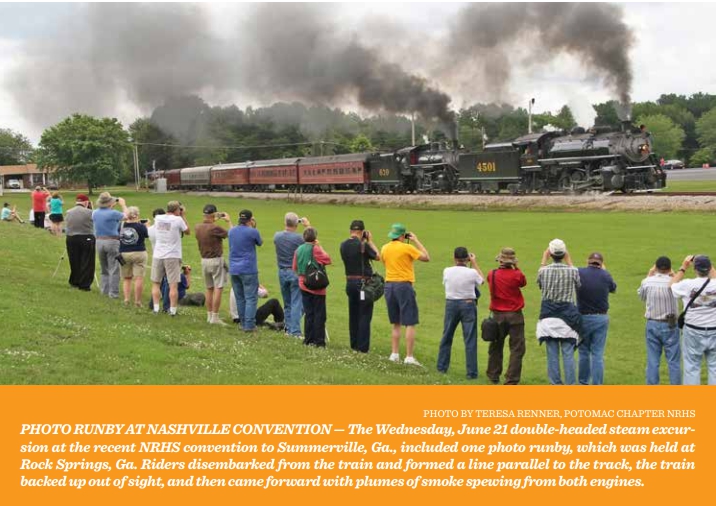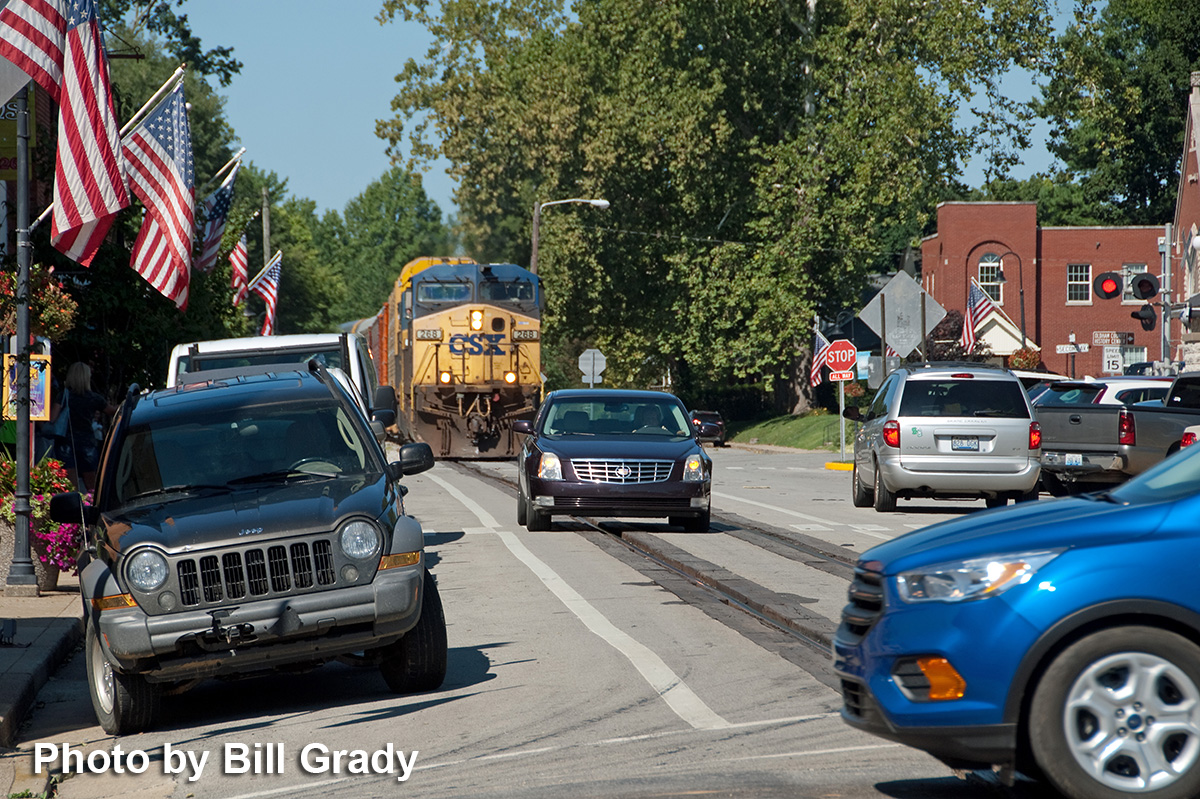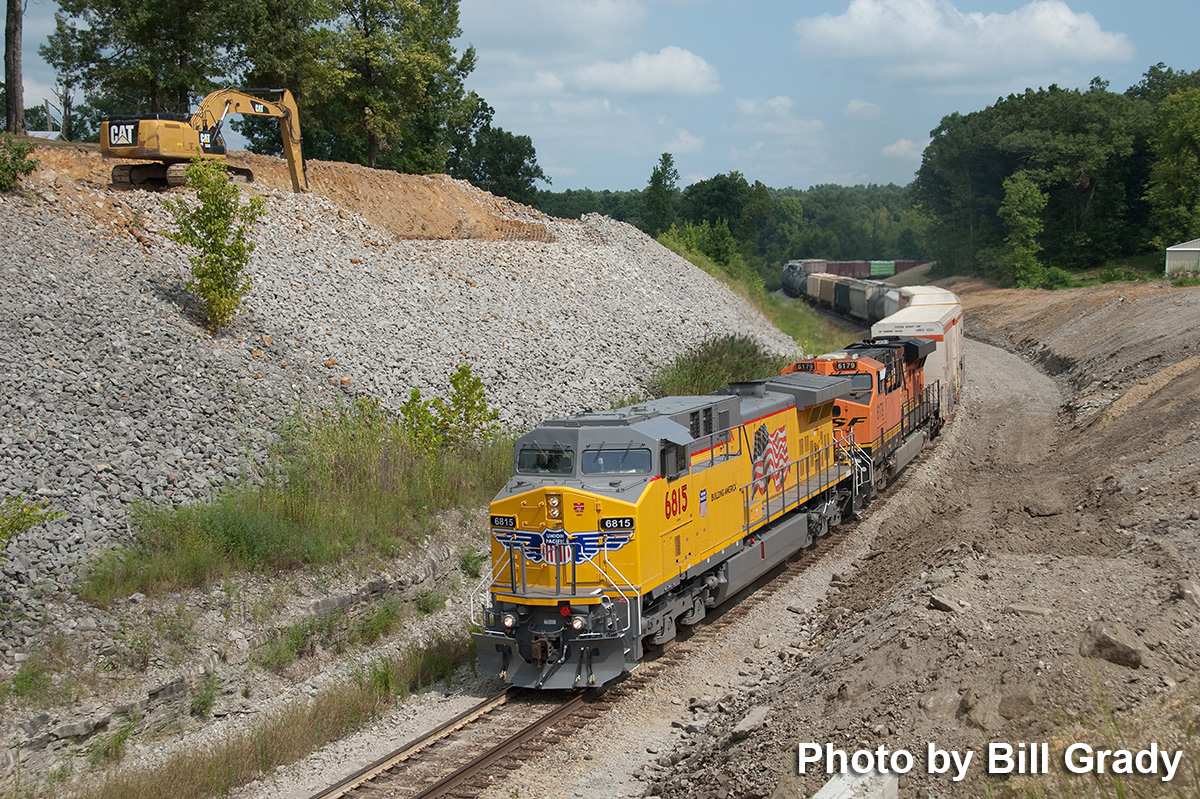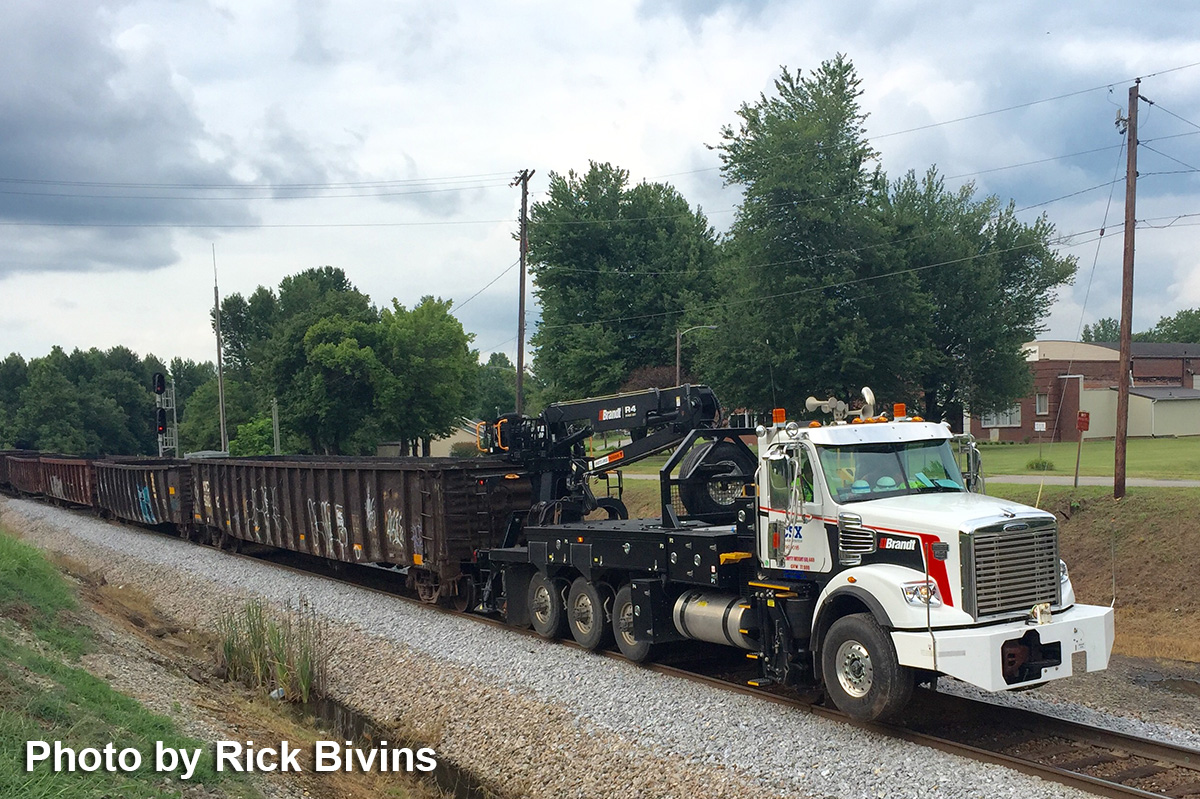Former Tuscola & Saginaw Bay RS1 number 2394 rusts away at Coopersville & Marne Railway on October 8, 2017. The former “Corkpine Express” began her career in 1951 for the Rutland Railroad. Photo by Chris Dees

 The 2018 NRHS convention will be held Tuesday-Sunday, Aug. 7-12, with headquarters in Cumberland, Md. The tentative schedule includes scenic rail trips through the countryside of West Virginia, Maryland and Pennsylvania, plus the annual meetings of the Society. The registration room for the convention will open in mid-afternoon on Tuesday, Aug. 7. The board meeting for the NRHS Fund Inc., will be held that evening.
The 2018 NRHS convention will be held Tuesday-Sunday, Aug. 7-12, with headquarters in Cumberland, Md. The tentative schedule includes scenic rail trips through the countryside of West Virginia, Maryland and Pennsylvania, plus the annual meetings of the Society. The registration room for the convention will open in mid-afternoon on Tuesday, Aug. 7. The board meeting for the NRHS Fund Inc., will be held that evening.
The first trip is scheduled for Wednesday with an all-day outing to Cass, W.Va. to ride the Cass Scenic Railroad up to Spruce, W.Va. At that point, there will be a “cross platform transfer” from the Cass steam train to the Salamander diesel train to Elkins, W.Va. Lunch will be served on the Salamander. Once in Elkins, NRHS members will re-board the buses for the return trip to the hotel in Cumberland.
The tentative schedule for Thursday includes a charter train ride on the Western Maryland Scenic Railroad from the depot on Cumberland (three blocks from the hotel) to Frostburg, Md., behind the newly rebuilt steam engine No. 1309. Photo run-bys are scheduled for this trip. Cab rides will be offered in both directions with proceeds benefitting the NRHS.
To read more from the NRHS News, go to https://admin.nrhs.com/NRHSNews/NRHS_News_October_2017.pdf.
Below are the winning entries from our August 2017 Chapter Photo Contest from a field of nine entries. Our next and last contest of the year will run from November 1-31, 2017 with a Submission Deadline of December 7, 2017



Not to be outdone by other Alco outposts in the Empire State, tourist railroad and shortline Arcade and Attica Railroad operates this ninety-seven year old Alco 2-8-0 on weekend excursions. Number 18 is the only regularly operating steam locomotive in the state of New York. Seen here during the mid-point layover at Curriers, New York, Photo by Chris Dees taken August 27, 2017.
American Locomotive Company will always be remembered as the birthplace of the Century line of locomotives. Thirty-two years after the last new locomotive rolled off the production line, Alco fans can still get their fix in The Empire State. Seen at Western New York & Pennsylvania Railroad’s shops in Olean, NY on August 27, 2017 are just a few examples: M636 number 643, C424 number 326, and RS3M number 406. Photos taken from public property by Chris Dees.
 When I was a teenager, as now, I was very much involved in my church, First Baptist, Ellijay, GA. My church established a relationship with a small Baptist Church start in Logan, West Virginia about 1978. I was then fortunate to travel to the Logan area three consecutive summers for week-long mission trips there. I caught my first sight of a “Chessie” system paint scheme when we crossed the Big Sandy River on I-64, there around the Ashland production facility at the state line. I was pumped!
When I was a teenager, as now, I was very much involved in my church, First Baptist, Ellijay, GA. My church established a relationship with a small Baptist Church start in Logan, West Virginia about 1978. I was then fortunate to travel to the Logan area three consecutive summers for week-long mission trips there. I caught my first sight of a “Chessie” system paint scheme when we crossed the Big Sandy River on I-64, there around the Ashland production facility at the state line. I was pumped!
We arrived in Logan and I was wide-eyed! I’d never seen so many “diverging routes” in one place. Everywhere we went, there were tracks alongside the roads. Not just spindly 70 lb. rail, I mean nice looking track with signals!
As we went about our work, we set up at Rum Junction Baptist Church, just southeast of downtown Logan. Now a location named for a junction had to be a railroad hotspot – and it was. I’d never seen unit coal trains until then. Lots of C&O paint still around, a little B&O here and there, then those rainbow-like Chessie diesels with that oddball outline shape on the inside of the C. My only other view of these colorful creatures had been on the pages of a Christmas catalog. Did I mention there were lots of yellow cabooses??? With cupolas, not bay windows!
I don’t remember when I learned that strange shape in the C had it’s beginnings as an artistic logo for the C&O of Chessie the kitten. “Sleep like a kitten on the C&O.” Certainly my hometown L&N/Family Lines or the down-to-business sleek black and aluminum Southern locomotives paled in comparison to the Chessie. I do have some old photographs and pictures, but not nearly enough.
Seems I always get around to pontificating on the subject of taking more photos of the rail action around us. I guess it’s how I deal with the regret of not doing it enough when I had the chance. Seems I still love to take that worn-out shot trackside – totally uncreative. But, I hold out hope that it may prove beneficial in a historical way someday.
With the ease of seeing by satellite that area in West Virginia where friends and I created so many great memories of mission work and trains, I have lately discovered that many of those roadside tracks are gone and that most of the ones remaining dead-end into what looks to be inactive mining facilities. Peach Creak Yard holds many empty and possibly stored coal hoppers.
Now, here’s the benefit of having a network of friends with the same interests. Thanks to Fred Ripley and his knowledge of the C&O and connected rail lines, I know some of those trains passing through Rum Jct, were possibly bound for connection with the Virginian or N&W several miles south at Gilbert, WV. Sadly the C&O bridge that once connected the lines is out of service. I know where a lot of that coal from all those diverging routs was going and which direction.
SO, KEEP TAKING PICTUES, AND STAY IN TOUCH WITH YOUR RAILROAD BUDDIES! You never know what little enjoyable nuggets of information you might stumble across. See related photo on the following page in Photo Gallery.
The draft from a hard-working steam locomotive, in this case Union Pacific 4-6-6-4 No. 3985, draws sand from a scoop into the firebox and through the flues. The practice cleans the tubes of soot. Draft is created by the exhaust steam, still expanding, being forced through a nozzle directed to the stack. The force of the draft draws smoke, heat and gasses through the flues. More than one fireman lost his scoop to the firebox in the days without mechanical stokers.
There’s a tale about the rookie fireman, on a lunch break, cooking a steak on a shovel, (not an completely unusual event.) A trickster engineer opened the throttle wide, whereupon, there went the sirloin.
The 3985 was built as a coal burner, converted to oil like sister 4-8-4 UP 844 when they were saved from the scrapper and placed in excursion and executive service. The 3985 and 844 pull an occasional railfan excursion to this day. They will be joined by Big-boy 4-8-8-4, No 4014 in the relatively near future.
Credits: Pix by David Hoge / pix & text (partial) as seen in TRAINS Magazine special edition Steam Today – 2008.
The shot at left was sent to me by Fred Ripley, former WKNRHS member now living in Columbus, OH. Fred has done a great deal of photography on the C&O as mentioned in my editorial. There’s a lot of Chessie heritage in this shot at Levisa Jct. 4070 et. al. is entering Coon Creek SD with empties for Johns Creek, May 7, 1978. Fred has scanned many of his slides for the book, Chesapeake & Ohio – The Decades of Change – 1961-1981. Several of his shots were used.
Your editor, Bill Thomas, is at left with Darryl Whitworth and Max Ringwalt (deceased), watching a Chessie System work train pass by on the Logan Sub, at Rum Junction, West Virginia, just outside of Logan. See reference to this location in “Picking the Points” editorial. Thank goodness our chaperone and my high school math teacher and annual staff advisor Tom Ottinger was shooting for memories sake.

Greetings NRHS Western Kentucky Chapter members and welcome to September! My how this year is flying by. But I personally love September so all is well. Our normal routine for September is a fish fry provided by Jim and Thomas Bryan. This years meeting date is in conflict with their family travel plans. So in place of fish we will be grilling hot dogs at the home of Bill and Angela Thomas. Bill will have trains running out doors on his garden layout. We will keep the meeting to a minimum all while gorging on back yard cousin!!!
We have a function coming up this month. On September 30th we should find ourselves in Crofton KY. for our annual Chapter Picnic. We will meet at the Veterans Park located behind the Crofton Volunteer Fire Department, adjacent to the CSX mainline. Bring a picnic lunch, a significant other and/or a friend. If you like, patronize one of the local eateries or the Amish Store for a fresh deli sandwich. This is our signature event and is always enjoyed.
Also this month we will hear from Jim Pearson regarding the most recent photo contest winners.
Bill Farrell will have a “plan of attack” regarding the Christmas Show. We will need to move on this topic as we will have only two meetings between this meeting and “show time”!!!
Looking ahead to next month, nominations for officers will receive a first call in October! Yup, it will soon be election time.
And there will be a few changes this year!
On the list for discussion is/are Chapter Trips. I asked for a committee to address this but no action has been taken. We need to take this up in discussion, perhaps next month for plans to approach in 2018.
Again this month we will gather at Bill Thomas’ house for food, fun and a little business. Please make an attempt to attend…the word “HOT DOG” is the key word here. More to follow!
Ricky Bivins, President
The classic curves of an EMD GP30 are always a crowd pleasing addition to any train, especially when its chrome (or in this case, nickel) – plated. On September 10, 2017, the Allen County, Ohio Historical Society hosted its annual Riding the Rails excursion from Lima, OH to Jackson Center, OH over the Indiana & Ohio Railway. The trackage is the former Detroit Toledo & Ironton mainline; power was Cincinnati Railway Company’s NKP GP30 number 901. Photo by Chris Dees.
